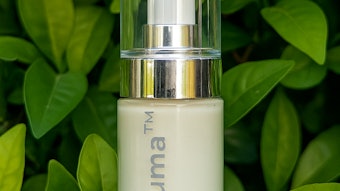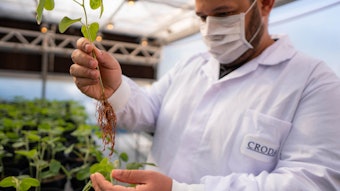The Personal Care Products Council has issued a statement regarding the presence of 1,4 dioxane and formaldehyde in baby products.
The council considered the two chemicals "trace" or extremely low in personal care products. In addition, it found that the percentages are below established regulatory limits or safety thresholds and are not a cause for health concern.
The council's statement is a response to a report by the Campaign for Safe Cosmetics that baby products were contaminated with harmful levels of carcinogenic chemicals.
"The U.S. Food & Drug Administration (FDA), the Cosmetic Ingredient Review (CIR), an independent panel of scientific and medical experts who assess the safety of ingredients used in U.S. cosmetic and personal care products, and other authoritative bodies throughout the world have long been aware of the potential presence of 1,4 dioxane and formaldehyde in personal care products and found them to be safe when present at low levels," said John Bailey, PhD, chief scientist for the council in the statement.
The council reported that 1,4 dioxane is a byproduct that can form in trace or minuscule amounts during the manufacturing process for ingredients that help to ensure mildness of some personal care products such as shampoo and bubble bath. The presence of 1,4 dioxane can be controlled and minimized, and raw material manufacturers routinely take necessary steps to reduce its presence to the lowest feasible levels.
The statement furthers that the extremely low levels of 1,4 dioxane reported by the group likely reflect efforts by manufacturers to control the levels of this contaminant through proper selection of raw materials and quality control of finished products.
The US Food and Drug Administration (FDA) has stated that the 1,4 dioxane levels found in their monitoring of personal care products and cosmetics "do not present a hazard to consumers."
Formaldehyde is a simple compound consisting of hydrogen, oxygen and carbon. It occurs naturally in the air we breathe and is even part of the human metabolism. Plants and animals also produce formaldehyde, and it is released as a byproduct of certain vegetables when they are cooked. Historically, formaldehyde was first used as a biological preservative more than a century ago. Today, formaldehyde-releasing preservatives are ingredients that help to ensure the safety of products by protecting them from harmful contamination by microorganisms during storage and during continued use by consumers. These preservatives have the ability to replace used-up formaldehyde by releasing it in very small amounts over time as needed. The use of formaldehyde-releasing preservatives ensures that the actual level of free formaldehyde in the product remains very low but sufficient enough to prevent or eliminate bacterial growth.
The council finds that exposures to formaldehyde through personal care products are generally extremely low. The CIR Expert Panel concluded that formaldehyde in cosmetics and personal care products is safe and should not exceed 0.2% (2,000 ppm) when measured as free formaldehyde. Likewise, the European Union's Cosmetic Directive allows use of formaldehyde in cosmetic and personal care products at a maximum concentration of 0.2%or 2,000 ppm (free formaldehyde).










